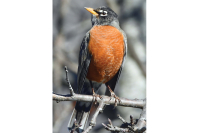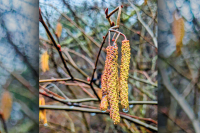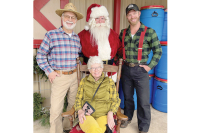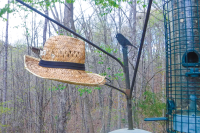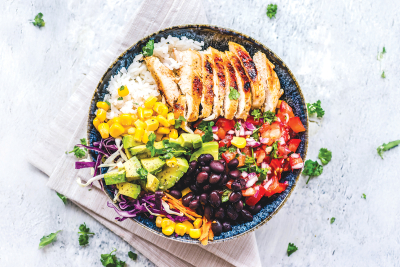Sponsored: The basics of beef — what do cows eat?

Based on a visit to Brasstown Beef (supplier for Ingles Markets) for entire post: http://inglesinfoaisle.com/dirty-boots-and-the-basics-of-beef
One of the things that you will often hear Brasstown Beef’s (Ridgefield Farm in Brasstown NC) representatives say is that their cattle are “always on grass.” To accomplish this, the cattle are always in pastures with grass and/or hay and are offered a free-choice corn silage (fermented feed) based ration. You may be thinking, “but corn is a grain!”.. actually botanically, corn is a part of the grass family www.fs.fed.us/wildflowers/ethnobotany/food/grains.shtml. To make corn silage, the whole plant (leaves, stalk, cob) is harvested (chopped) while still green and then piled up, packed down, and covered. This mixture “ensiles” (basically means it ferments), nutrients are converted so it is more nutritious for the cattle, and it becomes silage. Farm Manager Tim Dietz recommended thinking of it “.. kind of like kimchi for cattle…with all the probiotics.”
A Ph.D. in ruminant nutrition consults with Ridgefield to make sure feed ratios are appropriate and nutritionally balanced for the animals. The “free choice feed” also includes a specially formulated mixture of minerals and probiotics, and a supplement developed at Ridgefield Farm consisting of cinnamon, kelp and garlic.
Note: One of the common misconceptions is that beef cattle are constantly fed grain. Most of the beef we eat comes from cattle that have spent the majority of their lives grazing on grasses with some supplemental feed as needed or necessary. In many commercial operations, cattle are shipped to feedlots when they are a certain age or weight where they are finished (fed until they reach a desired weight) on a higher carbohydrate feed with more grain before being processed.
Leah McGrath, RDN, LDN
Ingles Markets Corporate Dietitian
Related Items
facebook.com/LeahMcgrathDietitian
800-334-4936





